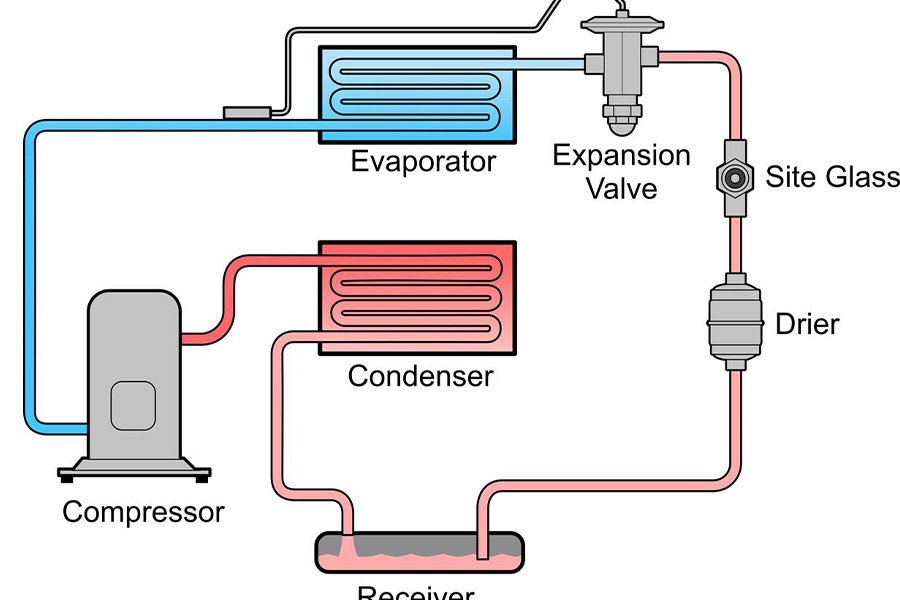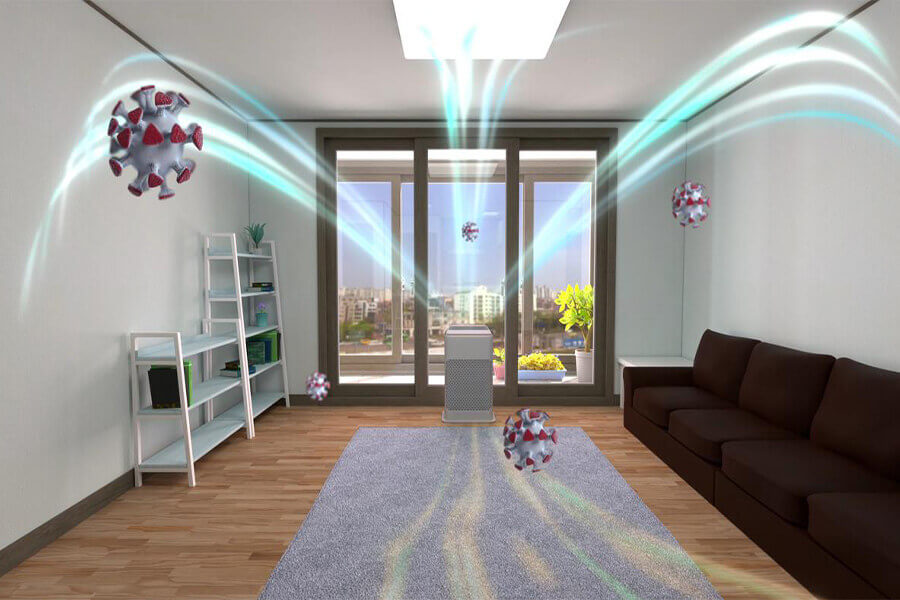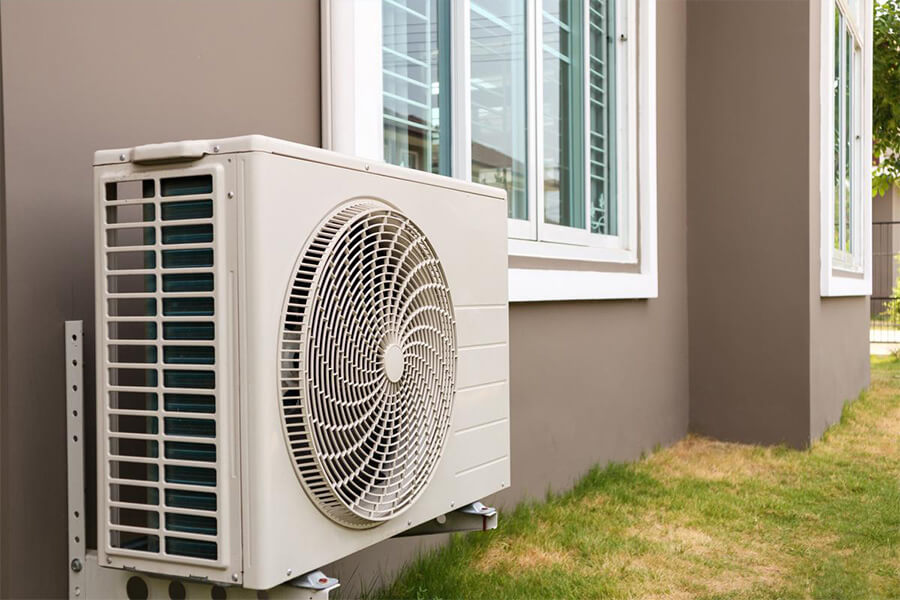Central air conditioners are pivotal in maintaining indoor comfort by cooling and dehumidifying the air. However, whether central air conditioners bring in outside air is more complex than a simple yes or no. To delve into this topic comprehensively, it’s essential to explore the mechanisms of central air conditioning, its components, and its interaction with outdoor air.
Introduction To Central Air Conditioning
Central air conditioning systems are intended to chill and circulate air throughout a building or home. These systems consist of various components, including an indoor unit, an outdoor unit, a network of ducts, and a thermostat. The cooling process typically involves the absorption and release of heat through a refrigeration cycle.
The Refrigeration Cycle
 The core principle of central air conditioning lies in the refrigeration cycle, which involves the transfer of heat from one area to another. This cycle is facilitated by a refrigerant, a chemical compound that can easily change between gas and liquid states at low temperatures. The cycle comprises four main stages: compression, condensation, expansion, and evaporation.
The core principle of central air conditioning lies in the refrigeration cycle, which involves the transfer of heat from one area to another. This cycle is facilitated by a refrigerant, a chemical compound that can easily change between gas and liquid states at low temperatures. The cycle comprises four main stages: compression, condensation, expansion, and evaporation.
- Compression: The refrigerant in a gaseous state is compressed by the compressor, causing its temperature and pressure to rise significantly.
- Condensation: The refrigerant condenses into a high-pressure liquid when the hot, compressed gas moves through the outdoor condenser coils, releasing heat to the ambient air.
- Expansion: The high-pressure liquid refrigerant is then allowed to expand as it enters the indoor evaporator coils. This expansion causes the refrigerant to evaporate and turn into a low-pressure gas.
- Evaporation: As the refrigerant evaporates, it absorbs heat from the surrounding indoor air, cooling it. The new low-pressure gas is then returned to the compressor to begin the cycle anew.
Indoor Air Circulation
 Central air conditioning systems maintain indoor comfort by continuously circulating and cooling the air. The indoor unit includes evaporator coils through which the refrigerant flows. As warm indoor air is drawn over these coils, the refrigerant absorbs the heat, causing the air to cool down. The cooled air is then distributed back into the living spaces through ducts and vents.
Central air conditioning systems maintain indoor comfort by continuously circulating and cooling the air. The indoor unit includes evaporator coils through which the refrigerant flows. As warm indoor air is drawn over these coils, the refrigerant absorbs the heat, causing the air to cool down. The cooled air is then distributed back into the living spaces through ducts and vents.
Air Filtration
 Most central air conditioning systems are equipped with air filters. These filters are designed to capture dust, pollen, pet dander, and other particles present in the indoor air. The filtration process helps improve indoor air quality by removing pollutants that can cause allergies and respiratory issues.
Most central air conditioning systems are equipped with air filters. These filters are designed to capture dust, pollen, pet dander, and other particles present in the indoor air. The filtration process helps improve indoor air quality by removing pollutants that can cause allergies and respiratory issues.
Ventilation And Outside Air
 Whether central air conditioners bring in outside air is closely tied to the ventilation concept. Ventilation is the intentional exchange of indoor air with outdoor air, and it serves several important purposes:
Whether central air conditioners bring in outside air is closely tied to the ventilation concept. Ventilation is the intentional exchange of indoor air with outdoor air, and it serves several important purposes:
- Fresh Air Supply: Ventilation ensures a supply of fresh outdoor air, which can dilute indoor pollutants and maintain oxygen levels.
- Moisture Control: Outdoor air often has lower humidity levels than indoor air. Introducing outdoor air can help reduce indoor humidity, especially in areas where humidity is a concern.
- Odor Removal: Ventilation can help remove odors and stale air from indoor spaces, promoting a more pleasant living environment.
Mechanical Ventilation
Central air conditioning systems themselves are not typically designed for mechanical ventilation. However, some advanced systems, known as energy recovery ventilation (ERV) or heat recovery ventilation (HRV) systems, integrate ventilation components. With the help of these devices, indoor and outdoor air can be exchanged in a controlled manner, and some of the energy from the outgoing air can be recovered to warm up the entering air.
Bringing In Outside Air
Standard central air conditioning systems without mechanical ventilation primarily focus on recirculating and conditioning indoor air. These systems do not intentionally bring in outside air for cooling purposes. Instead, they rely on the existing indoor air, cooling it through refrigeration and distributing it throughout the building.
Fresh Air Intake
However, many central air conditioning systems do have a fresh air intake, but their primary purpose is not for cooling. The fresh air intake is typically used with heating systems during colder months. When the heating system is operational, a controlled amount of outdoor air is brought in to prevent the indoor air from becoming too stagnant and to maintain healthy oxygen levels.
Balancing Energy Efficiency And Indoor Air Quality
Central air conditioning systems are designed with a focus on energy efficiency. Bringing in large amounts of outdoor air for cooling would increase the workload on the system, leading to higher energy consumption. This is why central air conditioning systems prioritize recirculating and conditioning indoor air to maintain a comfortable temperature without excessive energy usage.
Local Regulations And Building Design
It’s important to note that regulations and building design can influence whether central air conditioning systems introduce outside air. Building codes sometimes may mandate minimum ventilation to ensure indoor air quality. Dedicated ventilation systems are sometimes used in high-performance or environmentally friendly buildings to improve indoor air quality and energy efficiency.
Frequently Asked Questions
Do Central AC Systems Have Fresh Air Intake?
Yes, some central AC systems have a fresh air intake, but it’s often used with heating systems to maintain indoor air quality during colder months rather than for cooling.
Can Central Air Conditioning Systems Improve Indoor Air Quality?
Yes, central air conditioning systems with air filters can improve indoor air quality by collecting dust and pollen particles while the air is cycled.
Are There Any Energy-Efficient Ventilation Options For Central AC Systems?
ERV and HRV can provide controlled ventilation while recovering energy from the outgoing air to improve energy efficiency.
Do Building Codes Require Outside Air Intake For Central AC?
Building codes may require minimum ventilation rates, but outside air intake in central AC systems is not the primary focus for cooling purposes.
Conclusion
Standard central air conditioning systems do not bring in significant amounts of outside air for cooling purposes. They primarily focus on cooling and conditioning indoor air through the refrigeration cycle. However, central air conditioning systems can have fresh air intakes primarily used during heating seasons to maintain indoor air quality. Mechanical ventilation systems, such as ERV and HRV systems, are specifically designed to bring in controlled amounts of outside air for ventilation purposes while recovering energy. The choice between these systems depends on energy efficiency goals, indoor air quality requirements, and local regulations.
Disclosure: We may get commissions for purchases made through links in this post.









[…] to Appliance Analysts, the average monthly cost to run a central cooling framework in the United States ranges from $76 to $168 per […]